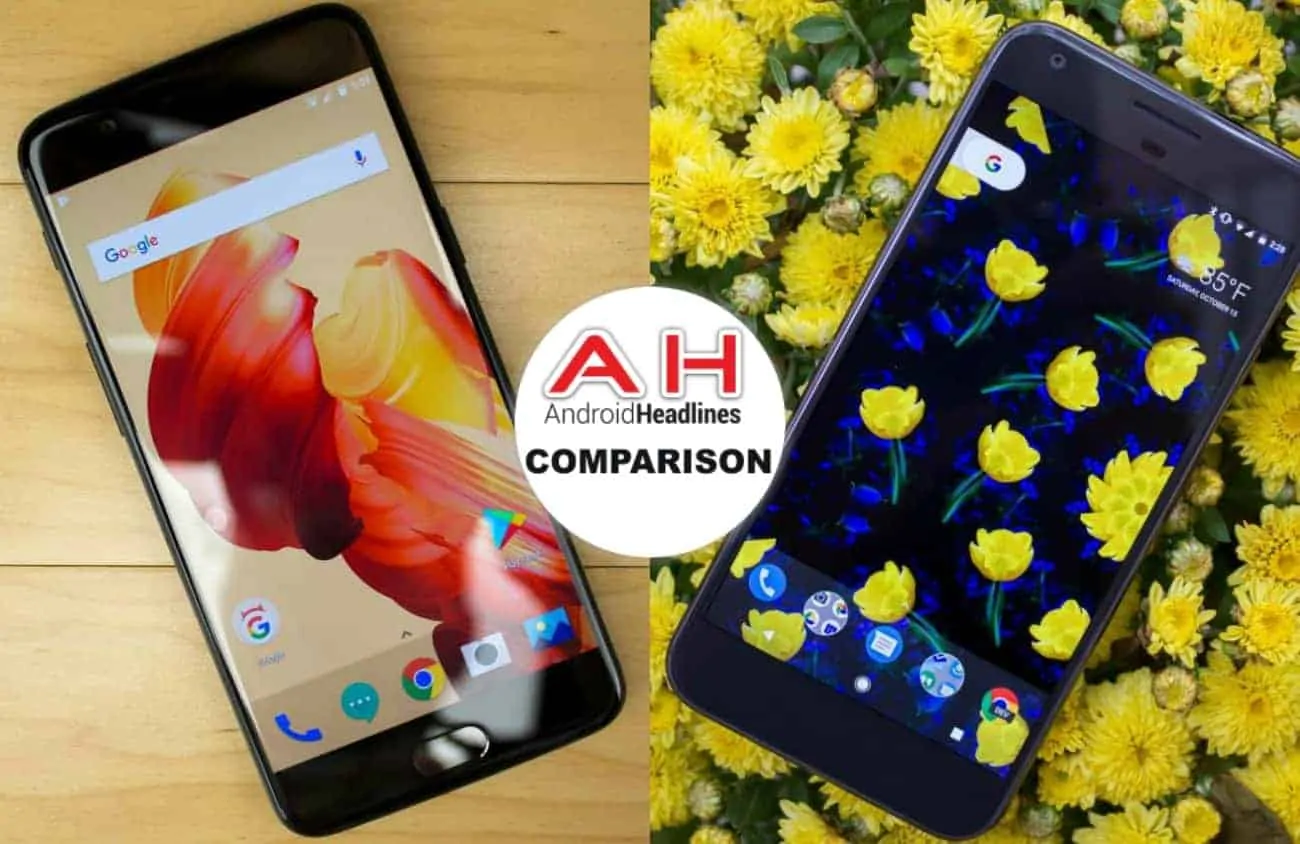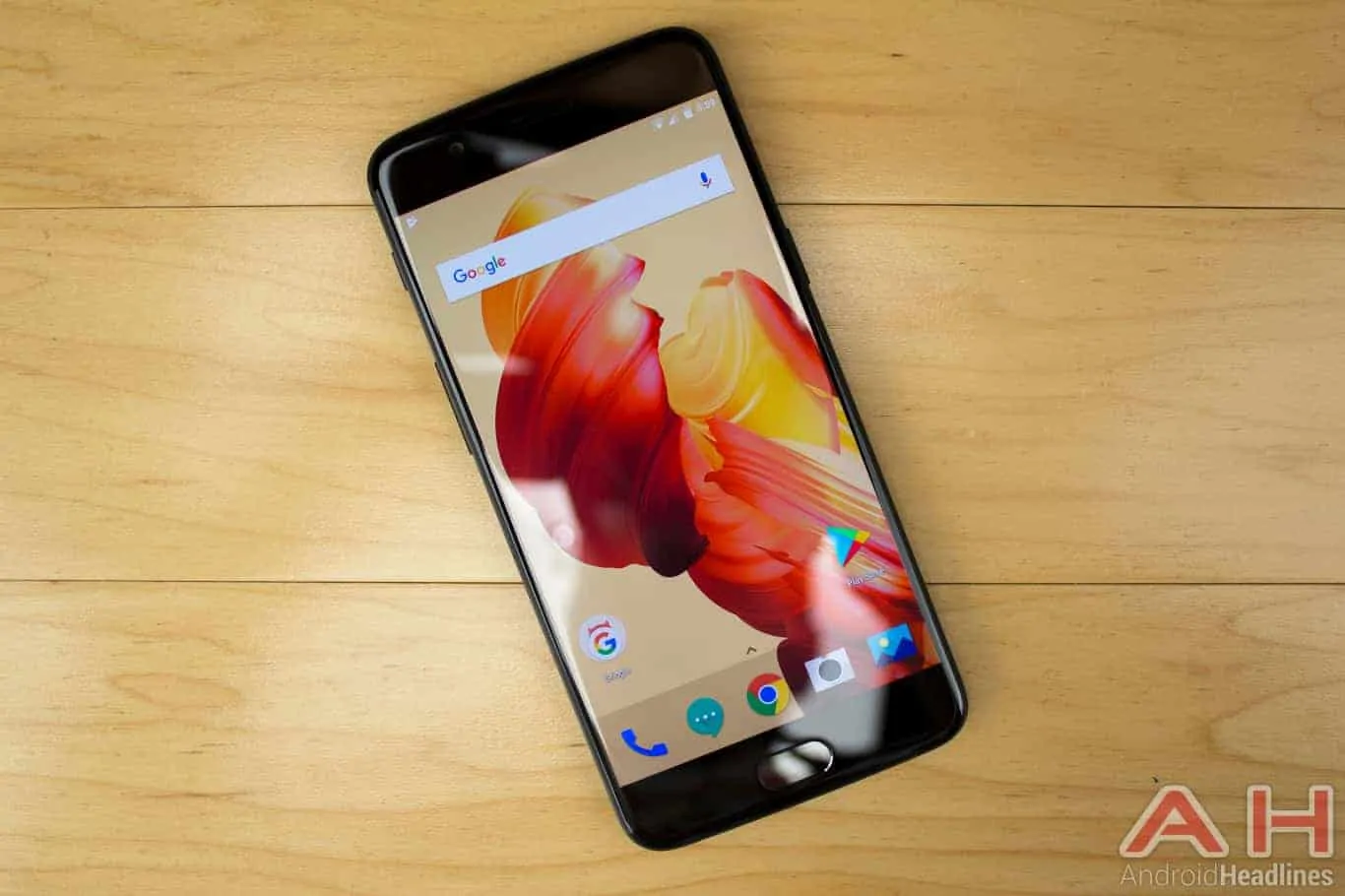Introduction
Today, we pit the cult-favorite OnePlus 5 against the mighty Pixel XL. Google’s Nexus smartphones were a favorite with the Android developer community as well as pure Android lovers, and the first-generation Pixel devices have been no different. The Google Pixel and its larger sibling, the Pixel XL, have become huge hits with Android aficionados around the world, and after a relatively lukewarm response to the OnePlus 3T, the OnePlus 5 has also received a thunderous response from the legions of OnePlus fans that the company has methodically cultivated over the past few years. Neither device comes with fancy – some would say gimmicky – features, such as iris scanners, Force Touch or Edge Sense, but what they bring to the table is a single-minded focus on performance. While the lower price-tag and newer, faster hardware of the OnePlus 5 give it an immediate advantage over the Pixel XL, it will be interesting to see if it can upstage the might of the Google device in a no-holds-barred head-to-head. So without further ado, let’s take a more detailed look at the two devices to see which one deserves your money and why.
Specifications
OnePlus 5
The OnePlus 5 was launched last month, and in a few short weeks, has become a best-seller in most regions it is available officially. The device comes with top-shelf hardware, something that you’d only expect from devices costing significantly more. Not only does it have one of the fastest, most desirable smartphone processors under its hood, it is also one of the first smartphones alongside the ASUS ZenFone AR and the Nubia Z17 to offer an 8GB RAM variant. While the device has been criticized for following Apple’s design language a bit too closely, there’s no denying the appeal of a full-fledged flagship smartphone with the price of a premium mid-ranger.
The OnePlus 5 features a 5.5-inch 1080p Optic AMOLED screen with a range of DCI-P3 colors to ensure color accuracy. The screen is also protected by Corning Gorilla Glass 5 to safeguard it from scratches and minor impacts. The device is powered by the Qualcomm Snapdragon 835 SoC that comes with a 64-bit CPU with eight custom Kryo 280 cores, four of which are clocked at 2.45GHz and four others at 1.9GHz. There’s also an Adreno 540 GPU to take care of all the graphics processing needs. The OnePlus 5 is offered in two different versions – one with 6GB of RAM and 64GB of internal storage, and another, with 8GB of RAM and 128GB of built-in storage.
Taking a look at the imaging options, the OnePlus 5 sports a rear-facing dual-camera module that comes with a 16-megapixel Sony sensor with an f/1.7 aperture alongside a 20-megapixel sensor paired with an f/2.6 telephoto lens. The front-facing camera on the OnePlus 5 comes with a 16-megapixel sensor with an f/2.0 aperture and 1.0μm pixels. As for the operating system, the device comes with Android 7.1.1 Nougat pre-installed in the form of Oxygen OS.
The OnePlus 5 also comes with a long list of connectivity features that include Wi-Fi 802.11 a/b/g/n/ac, Wi-Fi Direct, DLNA and Bluetooth 5.0, while cellular connectivity includes support for as many as 34 frequency bands, which should ensure compatibility with most networks around the world. The device also supports GPS with A-GPS and GLONASS, and there’s also an NFC chip that ensures you can use it for Android Pay. Unlike many of its peers, OnePlus hasn’t given up on the 3.5mm audio port yet, so the OnePlus 5 still ships with the legacy connectivity option, even though there’s also a USB Type-C port charging and data syncing. The device measures 152.2mm in length, 74.1mm in width and 7.3mm in thickness while weighing in at 153 grams.
Google Pixel XL
The Google Pixel XL is the larger of the two first-generation Pixel smartphones launched last year. The devices are designed, developed and marketed by Google, and are manufactured by Taiwanese tech company HTC. The handsets were officially announced last October, and were put up for sale internationally shortly thereafter. As a successor to the Nexus devices, the Pixel and its larger sibling, the Pixel XL, have managed to cater to the dedicated Android enthusiasts, even though many of them originally balked at the prices. However, the lure of high-end hardware, best-in-class cameras, pure Android experience and super-fast updates soon proved too much to resist, and with a few exceptions, the Android faithful fell for them hook, line and sinker.
As briefly alluded to earlier, the Pixel XL is the larger of the two Pixel devices, with a 5.5-inch AMOLED display that comes with a resolution of 2560 x 1440 pixels and has Corning Gorilla Glass 4 for protection. The device is powered by the Qualcomm Snapdragon 821 SoC, which may have now become outdated because of the increasing prevalence of the Snapdragon 835, but is still faster than the chip powering most of the flagship smartphones from last year, including, the Samsung Galaxy S7 and Galaxy S7 Edge. The handset also comes with 4GB of DDR4 RAM and either 32GB or 128GB of UFS 2.0 storage, depending on the model. The device also comes with a fingerprint scanner as well as an NFC chip on the back, making it compatible with Android Pay, as is to be expected.
Taking a look at the imaging options on the Pixel XL, the device comes with a rear-facing 12.3-megapixel sensor with an f/2.0 aperture, 1/2.3-inch sensor size and 1.55µm pixel size, alongside Electronic Image Stabilization, PDAF & Laser Autofocus, and a dual-tone, dual LED flash. The camera can take 2160p videos at 30fps and 1080p videos at up to 120fps. The front-facing selfie-cam comes with an 8-megapixel sensor with an f/2.4 aperture, 1/3.2-inch sensor size and 1.4µm pixel size. You can only, however, record 1080p videos at 30fps with the front-facing camera. The one thing that needs to be noted here, is that in a benchmark test conducted by DxOMark last year, the Pixel (and Pixel XL) camera received a score of 89 – the highest yet for a smartphone.
On the software side of things, the Pixel XL originally shipped with Android 7.1 Nougat on-board, and along with the Pixel, were the first two smartphones to have had Google Assistant pre-installed. As for the rest of the Pixel XL spec-sheet, the device includes a non-removable 3,450mAh Li-ion battery with fast charging enabled, while local connectivity options include dual-band Wi-Fi 802.11 a/b/g/n/ac, Wi-Fi Direct, DLNA and hotspot, alongside Bluetooth 4.2 with A2DP, LE. The device also has GPS with A-GPS and GLONASS. In terms of sensors, the device ships with an accelerometer, a gyroscope, a proximity sensor, a magnetometer and a barometer. The device measures 154.7mm in length, 75.7mm in width and 8.5mm in thickness while weighing in at 168 grams.
And The Winner Is …
The Final Word
Chinese smartphone-maker OnePlus has already become a name to reckon with in the five short years of its existence, and it’s easy to see why. The company makes some really compelling smartphones with flagship-quality hardware, and sells them at a price that’s significantly more pocket-friendly than the stuff available from top-tier manufacturers. The OnePlus 5 is no exception. Sure, it doesn’t have any revolutionary new technology like Infinity Display, Force Touch or Edge Sense, but for what it brings to the table, the price-performance ratio is pretty undeniable, whichever way you look at it.
On the other hand, Google’s Pixel devices ship with the most cutting-edge hardware available in the market, but also have some of the best cameras on any smartphone right now, as are borne out by most real-world tests. Add to that the pure, bloatware-free Android experience and the full support of an almost-fanatical Android developer community, and it’s not difficult to see why the Pixel and the Pixel XL are two of the most-loved Android smartphones right now. In the end that’s what it really came down to. Smartphones are as much about hardware as they are about software, which is why the ultra-smooth pure Android experience, and the fast software updates make the Google Pixel XL the clear winner in our head-to-head.
Buy The OnePlus 5 Buy The Google Pixel XL


